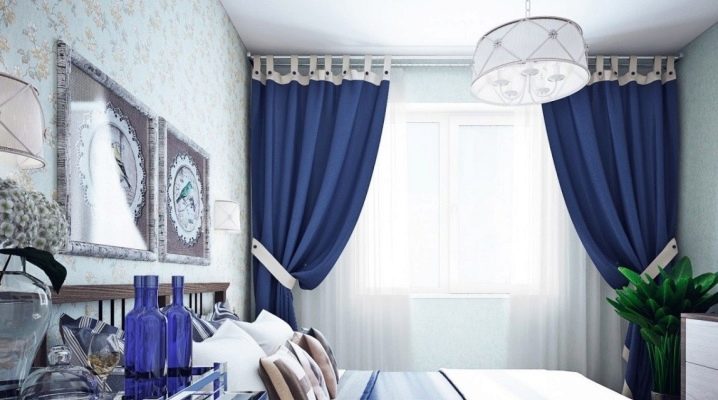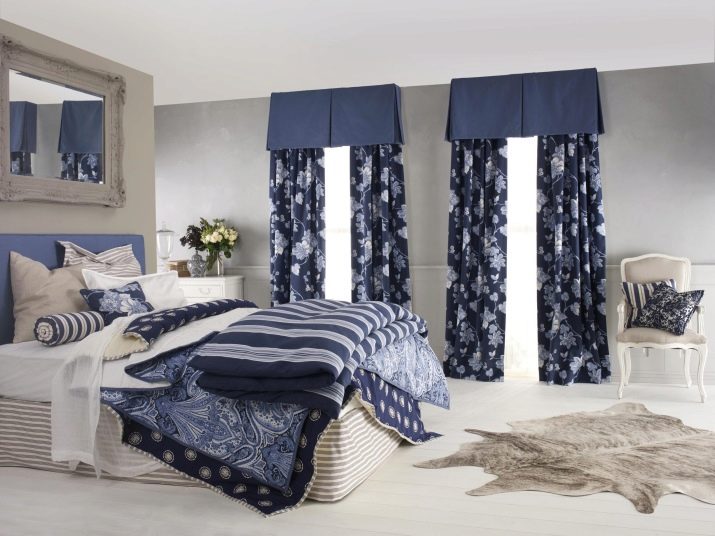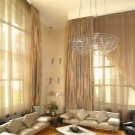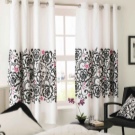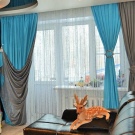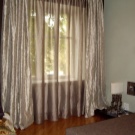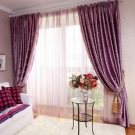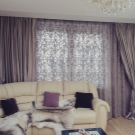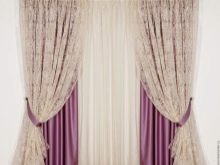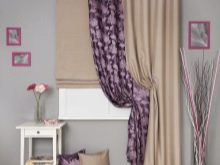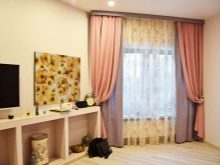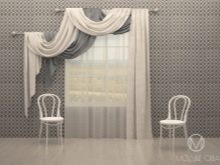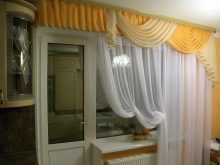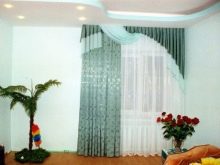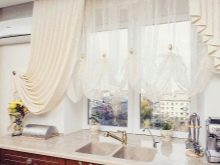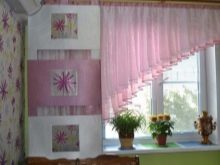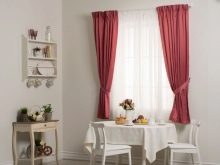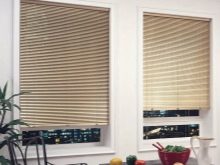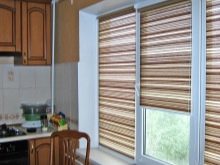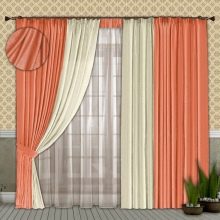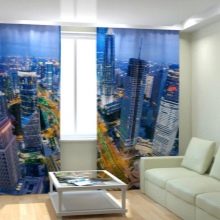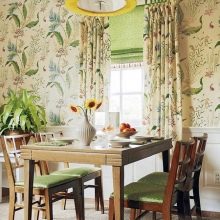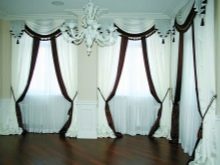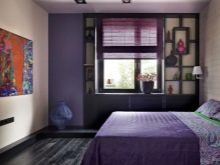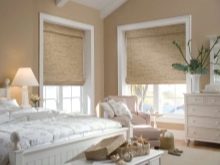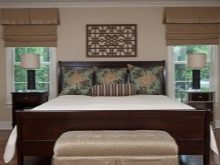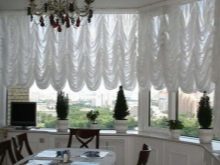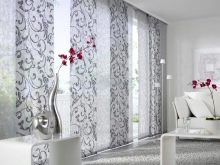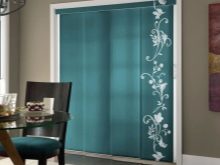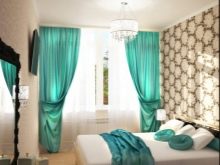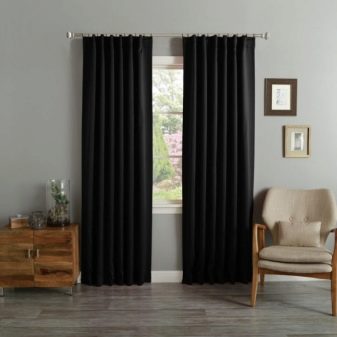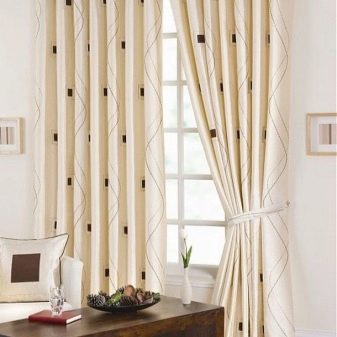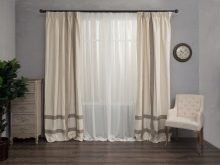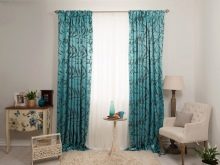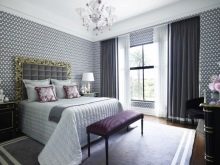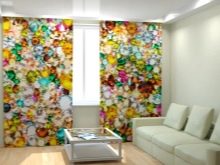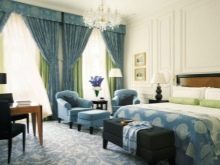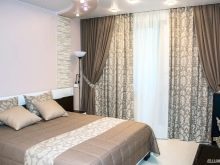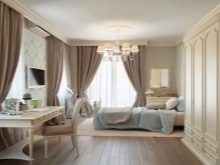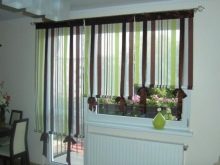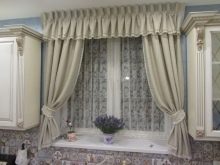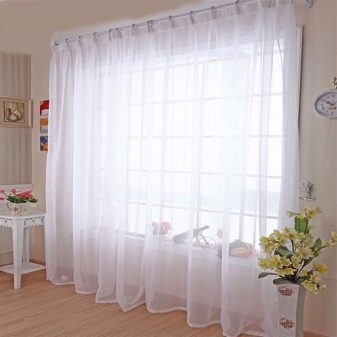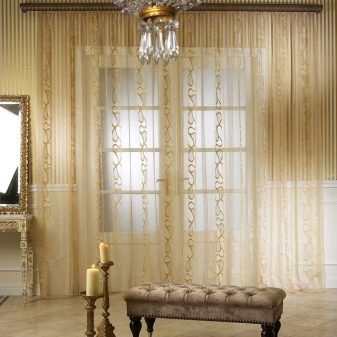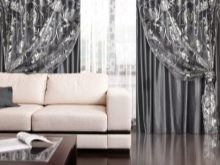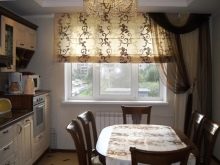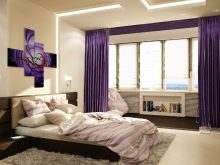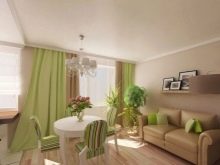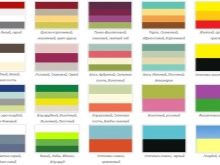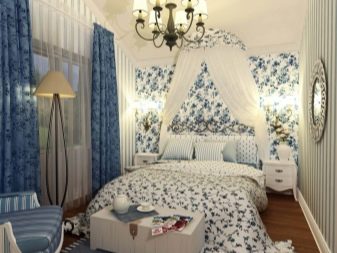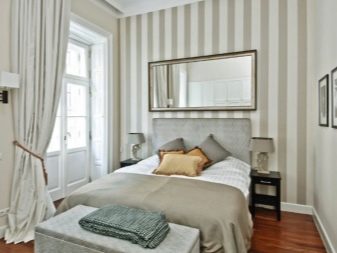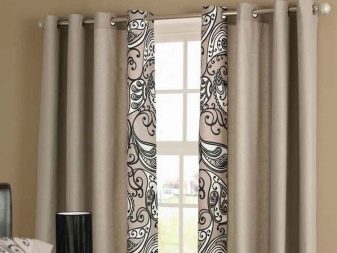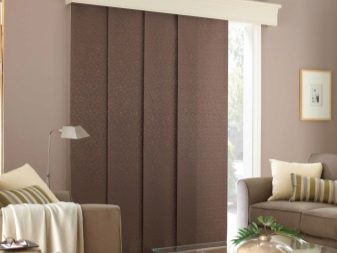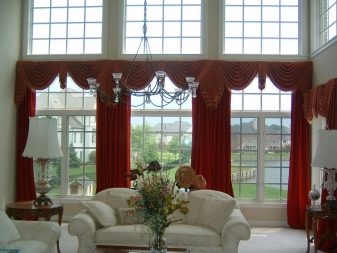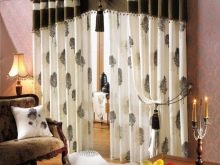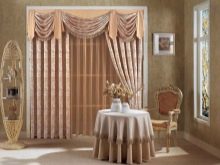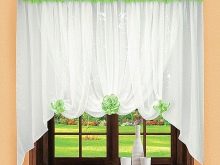How to choose curtains for the interior?
Curtains are an indispensable accessory of most residential premises, which can both give the interior a unique style and loudly declare the owner's good taste, and spoil even the room that did not look tasteless before. For this reason, modern designers pay attention to the selection of curtains no less than the same wallpaper or furniture. However, in the case of replacement, most ordinary people do not resort to the help of a designer, so it’s worthwhile to find out more about how to choose curtains so that they become a real highlight of the room.
Modern curtain models
Everyone knows about the classic curtains, and it’s not so difficult to choose them - this knowledge is passed on from generation to generation. You can give preference to the classics in any century, the only question is whether it corresponds to the general style of the room.
Many owners today tend to make full use of all sorts of new items, which means it is worth being at least approximately aware of the current fashion trends.
- Multi-layer curtains usually made of two layers of material, one of which is decorated with a pattern, while the other is monotonous. This solution looks thoroughly and stylishly, and also has a high durability, therefore it is appropriate in rooms where comfort is extremely important - for example, in a bedroom or living room.
- Asymmetrical curtains so far they are a huge rarity and are almost always designed by designers to order, and therefore they are expensive, but there is no way to express yourself more straightforwardly.
It is rather difficult to enter such a solution into the interior, because a person who has found money for such curtains should order the design of the room as a whole. As a rule, in apartments such refinement is appropriate except in the living room.
- Short curtains came to us from the Mediterranean, therefore, we also use them mainly to give the room more warmth. Such a decision is appropriate except where, on the one hand, there is a lot of sunshine and heat, on the other hand, the sun's rays will not make those present regret that the owner has not chosen the curtain more seriously.
Very often, such a design is used in kitchens and canteens - both because those present here do not stay long, and because such a solution is optimal from the point of view of fire safety.
- Roller blinds and blinds - option that looks the most modern and technologically. For a long time, blinds were considered an indispensable attribute of offices as opposed to housing, but today both they and cozier roller curtains fit perfectly into such design styles as loft, modern, high-tech, and with due imagination - in more classical areas.
The advantage of such models is that they allow you to use the space of the window sill, and if it is also large enough, you can easily replace the table.
Of course, modernity has touched not only the shape, but also the design of the curtains. Monochrome models and options with a simple pattern are still relevant today, but the companion curtains can be a special "trick" of the modern premises, which are sold immediately in the package with wallpaper and partially echoes with them - either a hue of the background, or the size of the pattern, or its elements different colors.
Photocurtains can be a great alternative to the already familiar photo wallpaper, especially if you want to see a New York conditional window instead of a protracted construction outside the window. And then, such a decision will immediately remove all questions regarding the main emphasis in the room. Finally, curtains with a border, which is a small lapel in the upper part, will simply adorn the model, which will look a little more refined.
Popular styles
Ultramodern design styles, such as loft or high-tech, require special curtains - for example, the same blinds or asymmetrical models. Even conditional classics have different varieties that allow to successfully style the interior in the traditions of a particular country.
- Curtains that are considered classic we are known to everyone - they are necessarily rectangular and rather voluminous, used in constant accompaniment of curtains, various ornaments or inserts are appropriate here.
This solution is most typical for bedrooms and living rooms, it can be seen in most homes, therefore this option will suit most styles.
- Roman drapes in many ways resemble the classic ones, but at the same time they have a trait,which we used to attribute mainly blinds and roller blinds - their length can be changed with the help of a lace or similar devices. This makes it possible to create the privacy of a typical bedroom or to let in the sunlight, shortening the curtain to the level of a typical Mediterranean.
Such a solution is both stylish and very practical, besides it gives the impression of chic.
- Classic French Style Curtains so far they are only gaining popularity with us, and they are known for the fact that inside each canvas there is a characteristic lacing, thanks to which the curtain is never flat - there are always folds of perfect shape on it. At home, this solution is used very rarely, but it can be seen in many exclusive restaurants, from where it gradually migrates to the dining rooms of large apartments. Austrian drapes are similar to the French style.
- Japanese curtains for our country, it has become a fairly common occurrence, although so far not everyone knows that this product is called that way. It is a question of long narrow panels from dense material which are fixed on the rail mechanism and can "go" on it, regulated by the rope mechanism.
This option of window trim is combined with almost any room design, thanks to which it deserved such popularity. After all, the panels, contrary to popular belief, do not have to be monotonous.
Color solutions
To determine the color - one of the most difficult tasks when choosing curtains. It is important not only to achieve a combination of shades in the interior of the room, but also to determine the overall tone - at least to choose warm or cool colors. Most often, the choice in this area is made on the principle of counterweight - in dark and cool rooms facing the north, mostly light and warm colors (orange, olive, etc.) are used, while in sunny and hot they are, on the contrary, dark and cool the waves.
The only special place should be considered the kitchen - there is almost always a warm gamma more appropriately cold.
For close rooms with a low ceiling, an abundance of dark design is contraindicated, and for spacious and too high ones, on the contrary, light colors are undesirable. This rule is always mentioned when choosing wall decoration, unfairly forgetting that it also applies to curtains.
Monochrome options fit perfectly into the interior of the middle room, especially if contrasted with wallpaper, decorated with ornaments or patterns. The curtains with a pattern, on the contrary, are well combined with a monotonous decoration of the walls, but they are also used to visually change the dimensions of the space - patterns stretched vertically add heights, and stretched horizontally - widths. Accordingly, large elements make the curtain visually small, and small ones, on the contrary, increase it.
According to the principle of interaction of the color of curtains with the interior, curtains are divided into four types:
- insignificantly different from the color of the walls - literally one or two tones;
- contrastingly different from the rest of the room and are the main focus in the design;
- repeating the main tone of the interior of the room;
- repeating the second, additional tone of the interior gamut.
Materials
In pursuit of popular materials one should not forget that the curtain is not only an ornament, but also a very practical accessory. It can, for example, warm the room and prevent the penetration of extraneous sounds, as well as not let the bright sunshine in, if the choice fell on dense fabrics.The decorative moment, naturally, should not be lowered, because the curtains, in addition to the beautiful appearance, can also visually change the parameters of the room or even mask the unevenness of the walls and poor-quality decoration.
Therefore, it is not necessary to hurry to choose the first curtain from the mat, it is better to ask a number of questions:
- whether the material is suitable for its composition and quality, whether it will not be harmful to household members due to, for example, discharge from a synthetic product;
- Whether such material is appropriate for draping the selected room;
- how long the purchased curtain will last, and whether it will not have to be changed as soon as possible due to its early wear;
- whether the fabric is able to retain its original shade, or it will quickly burn out in the sun and will no longer fit into the design of the room;
- how strongly the selected material absorbs odors - perhaps it is inappropriate for the kitchen;
- how the selected fabric will behave during a fire - whether it will accelerate the spread of fire, or, conversely, will delay it for a while.
However, for the most popular "curtain" fabrics, a general characteristic was drawn up a long time ago, one can say in advance what such a choice would be good.
Most modern consumers prefer such solutions:
- if you need to protect the room from the street with its noise and excess light as much as possible, then no fabric will cope with this task better than velvet, which is optimal for decorating bedrooms;
- Chenille curtains are the best choice, if you only need to protect yourself from noise, allowing sunlight to penetrate - in the nursery and in the office, such an accessory will be appropriate;
- Jacquard curtains are characterized by good insulation performance and long service life, and the fabric allows you to apply bright and durable patterns with great detail;
- taffeta curtains darken the room well and at the same time look very dignified;
- among natural and relatively inexpensive fabrics, tapestry is a huge success; it provides bright colors and does not precisely emit harmful components into the air;
- satin curtains will appeal to those who love everything brilliant, because the material has a glossy surface;
- the veil is more used not as a curtain, but as a curtain complementing it, whose function is to add elegance to the interior rather than real protection from any negative factors;
- organza is the main competitor of the veil in terms of curtains, only characterized by increased rigidity and strength, and hence durability.
What to consider when choosing?
You may not know any design rules, if there is a subtle sense of beauty, but if it is not there, you should build on the knowledge that has been tested by previous generations. The choice of curtains is inseparable from how the room looks like in general; therefore, the interior should be created in the complex.
General interior room
Correctly choose the curtains for each room - a real art, consisting of knowledge of many rules. So, for the living room, the maximum isolation from the outside world is important, and in the hall the curtains are chosen according to the style of the room and the decoration of the walls, which can be anything. For the kitchen and children's room, it is advisable to choose shortened versions of the curtains, so that neither the fire, nor the raging kids could reach the window textiles and create additional problems.
At the same time, the curtains are almost always an accent in relation to the walls - they can be distinguished by the presence of a pattern, or, on the contrary, by its absence as opposed to patterned wallpaper, it can be distinguished by texture or only color.Portieres never choose a completely similar shade to the rest of the room, but a rather popular solution is the color of the curtains a couple of shades lighter or darker than the wallpaper. Another thing is that a fundamentally different approach implies a noticeable difference in fabric from walls in color, and it’s good if within a certain color range, and not in the form of a bright contrast.
As a rule, either warm or cold gamma is used for the whole room as a whole, the only exception to the rule is perhaps combinations of blue and blue with orange or coral and yellow. So, lilac drapes are well suited to pink wallpapers, and in a beige room it is appropriate to hang up green, turquoise or purple curtains.
A complete color compatibility table in the interior is attached so that everyone can choose the right curtains depending on the shades of the curtains.
Separately, it should be said about the striped wallpaper, which in the interior of an ordinary apartment is not so rare. In this case, it would be most appropriate to focus on the curtains due to the fact that they will be monotonous in contrast to the walls or will be with a fundamentally different pattern or patterns, but made in the same colors.If we talk about the choice of monophonic curtains in addition to the colored wallpaper, then perhaps the choice should not be made in favor of any of the colors presented on the wall - it is better to prefer a shade close to one of the stripes, or take the path of maximum contrasting.
Window size and type
If properly selected portieres can change the impression of the entire room as a whole, then this statement applies even more to the image of the window itself. Such changes can be both positive and negative, but, the main thing is not to act at random, but to purposefully select the design.
- A typical problem of apartments and private houses of old buildings are too narrow in the modern sense of the window. To punch a wider hole in the main wall is a risky and not always resolved idea, therefore, visually increasing the width of the opening can be made by banal eaves, which will be much wider than the window.
To use it, of course, you need to full - curtains should not hang on it in the middle.
- Too low windows create the impression of a low ceiling, so it would be appropriate to visually “lift” them.To do this, in no case should the cornice be hung low - on the contrary, it is fixed under the ceiling itself, and the curtains are chosen on the grommets so that they also reach the ceiling itself. Approximately the same method is used to solve the problem with arched windows, for which a low-set straight eaves will be inappropriate.
If the window opening is not only low, but also differs by a slight height, it is better to choose the curtains of the curtains.
- In modern design, not too many owners complain about too large windows, but sometimes the giant dimensions create a feeling of a certain helplessness. If the need to visually reduce the window opening seems obvious, you can solve the problem with bright curtains with a clearly visible print and other distracting details such as drapery and quilling. If the problem concerns rather excessive width, the Japanese curtains will be an ideal option - their edges are almost perfectly horizontal in any position, so with dense material they narrow the window.
Beautiful examples
Many apartment owners, searching on the Internet for images of perfectly selected curtains, come to the conclusion that it is almost impossible to achieve the ideal.In fact, it is clear that mainly photos of the premises, on which expensive designers have worked, are being laid out on the Internet, and not the first counter photographer shot this interior. But this does not mean at all that it is impossible to repeat such a design or draw from it real ideas for your own home.
- For example, on the first photo - ideal curtains for the living room with a small curb at the top. They look very comfortable, while contrasting with the walls in everything - in color, and in the picture, which the wallpaper does not have at all. The curtain looks light and airy, hinting that behind it lies a world full of all the most beautiful.
- The second example shows how multi-layer drapery can give a sensation of chic to fairly ordinary curtains. The “trick” here lies precisely in the abundance of small elements, because the rest of the curtains practically merge with the walls - it differs only in shade and the presence of drawings. At the same time, it is clear that a carefully crafted interior with not so much material costs creates a feeling of unspeakable wealth.
- Finally, the last example is an ideal for a kitchen or dining room.The curtains are short here, so do not close the wide window sill, and the whole range is made in warm colors.
About how and what curtains to choose, see the following video.
